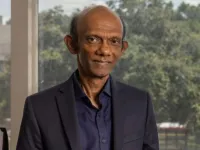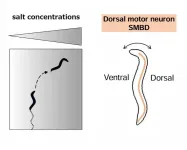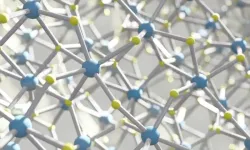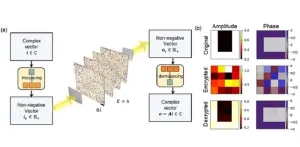(Press-News.org) More than 11 million people in the United States take anticoagulation or antiplatelet medications, such as heparin or aspirin, to treat serious conditions like heart attack and stroke. However, these medications also put patients at risk of life-threatening bleeding in the case of injury or during surgery. To improve strategies for reducing blood loss, a team led by investigators from Brigham and Women’s Hospital, a founding member of the Mass General Brigham healthcare system, developed a porous material that maximizes blood absorption and effectively activates clotting mechanisms, even in patients on anticoagulation or antiplatelet medication. Findings, published in PNAS, show that the bleed-stopping material, or “hemostat,” halted bleeding within an average of about five minutes in patients on anticoagulants who underwent cardiac catheterization, a dramatic reduction from traditional compression methods that can take over two hours.
“This is a next-generation hemostat that effectively stops bleeding, even in patients who take anticoagulation or antiplatelet medications,” said corresponding author Hae Lin Jang, Ph.D., of the Center for Engineered Therapeutics. “We used an exciting, interdisciplinary approach that combines engineering principles, materials science, and understandings of molecular biology to overcome the limitations of existing therapies and address a real clinical need.”
Over 5 million people globally die each year due to trauma, with over a third of these deaths attributed to uncontrolled bleeding. The researchers used what is known as a “rational engineering” approach to develop a more effective hemostat. They began by simulating blood flow through pores to determine what microscopic design would optimize absorption. They drew inspiration from the architecture of the human lungs, which contain spherical “air sacs” called alveoli that enable a high interaction rate with blood within a short time. Alveoli have a large surface area based on their tortuous porous structure, which led the researchers to engineer a highly interconnected, spherical microporous structure in their material to rapidly absorb blood and accumulate clotting components like platelets in a highly concentrated manner, which facilitate blood clotting.
The researchers developed the alveoli-like structure using chitosan, which can be extracted from shellfish. Chitosan is already used in some hemostats: its positively charged surface is known to strongly attract negatively charged platelets and fibrinogen, the two major components of a blood clot. However, contrary to previous assumptions, the researchers discovered that chitosan also directly stimulates blood clotting by activating the TLR-2 clotting pathway, making it a viable mechanism for increasing blood clotting even in patients on anticoagulants.
The researchers demonstrated the efficacy of the material in 70 patients who underwent cardiovascular catheterization procedures while on the anticoagulant heparin, with bleeding observed to stop after a mean time of about five minutes for patients on low-dose heparin and in under about nine minutes in patients on heparin doses of up to 12,500 IU.
Other advantages of the hemostatic material included its easy application and removal. The chitosan pad eliminated the need for strong and prolonged compression, which can take several hours and requires extensive nursing. Furthermore, gauze removal can cause severe pain to patients and is frequently associated with a reoccurrence of bleeding; in contrast, the more absorptive chitosan hemostat was removed relatively cleanly from wounds and received high patient comfort scores.
The researchers are continuing to study the wound-healing process after application of the chitosan hemostat. Moreover, they are investigating other next-generation wound dressings, which may be able to deliver drugs or improve the cleanliness of the wound environment, thus reducing the need for frequent changes.
“This hemostat can save valuable time in emergency situations,” said first author Vivian K. Lee, Ph.D., of the Center for Engineered Therapeutics. “In emergencies, it can be extremely challenging to screen the prescription information of a patient to provide appropriate anticoagulation reversal therapy to patients on anticoagulants. If a hemostat can bypass a medication’s anticoagulating mechanisms, it can be used in a wide range of patients, saving time, and potentially saving lives.”
Authorship: Co-authors of the study include Taewoo Lee (BWH), Amrit Ghosh (BWH), Tanmoy Saha (BWH), Manish V. Bais (BWH), Kala Kumar Bharani, Milan Chag, Keyur Parikh, Parloop Bhatt, Bumseok Namgung (BWH), Geethapriya Venkataramanan (BWH), Animesh Agrawal, Kiran Sonaje, Leo Mavely, Shiladitya Sengupta (BWH), and Raghunath Anant Mashelkar.
Disclosures: Namgung is involved in consulting for Curer Inc. Mavely is a founder and CEO and owns equity in Advamedica Inc., and Axio Biosolutions Private Limited. Agrawal and Sonaje own equity in Advamedica Inc. Sengupta is a co-founder and owns equity in Akamara Therapeutics and Invictus Oncology and is a consultant and member of the scientific advisory board of Advamedica Inc. Jang is a founder and has financial interest in Curer Inc. Mavely owns equity in Axio. Mavely is listed as an inventor on patents describing the hemostat.
Funding: This work was funded by the National Institutes of Health (AR073135, CA236702, CA214411, CA229772, and DE031413), American Lung Association Discovery Grant, Department of Defense (PC180355 and CA201065).
Paper cited: Lee, VK et al. “An architecturally rational hemostat for rapid stopping of massive bleeding on anticoagulation therapy” PNAS DOI: doi.org/10.1073/pnas.2316170121
For more information:
Researchers Develop a Novel Antibiotic Cement to Treat Bone Infections
Cancer Cells Use 'Tiny Tentacles' to Suppress the Immune System
###
END
Bioengineered material developed to rapidly stop bleeding in patients on blood thinners
The porous material, derived from shellfish, optimizes absorption while activating a previously overlooked blood-clotting mechanism, stemming bleeding within minutes
2024-01-22
ELSE PRESS RELEASES FROM THIS DATE:
New biomarkers for active lupus nephritis discovered
2024-01-22
New biomarkers with improved diagnostic performance for early detection of lupus nephritis have been discovered in the University of Houston lab of Chandra Mohan, a pioneer in lupus research. Early identification of renal involvement in lupus and prompt treatment are essential in reducing the pain, suffering and eventual mortality it causes.
Systemic Lupus Erythematosus (SLE), commonly called lupus, is an autoimmune disease that occurs when the body attacks its own tissues and organs. Inflammation from the disease can impact many different parts of the body including joints, skin, kidneys, blood cells, brain and heart. Lupus nephritis is one ...
New research examines how assumptions affect motion capture technology
2024-01-22
Motion capture technology has applications in a wide range of fields, including entertainment, medicine, and sports, to name a few. But what if the measurements these systems were based on were rooted in social practices and biased assumptions, leading to errors that become ingrained over time?
This question is at the heart of new research co-authored by Mona Sloane, an assistant professor of data science and media studies at the University of Virginia.
Sloane and her co-authors — Abigal Jacobs, an assistant ...
Scientists identify mutations that cause inherited kidney disease
2024-01-22
Genetic changes or mutations can cause hereditary kidney disease, which can eventually lead to dialysis or the need for kidney transplantation. Identifying the cause of inherited kidney disease is the first step in identifying a treatment.
With that goal in mind, researchers at Wake Forest University School of Medicine and the First Faculty of Medicine of Charles University in Prague, Czech Republic, have discovered a new genetic cause of inherited kidney disease.
The findings were recently published in Kidney International.
According to Anthony J. Bleyer, M.D., ...
How the brain responds to reward is linked to socioeconomic background
2024-01-22
MIT neuroscientists have found that the brain’s sensitivity to rewarding experiences — a critical factor in motivation and attention — can be shaped by socioeconomic conditions.
In a study of 12 to 14-year-olds whose socioeconomic status (SES) varied widely, the researchers found that children from lower SES backgrounds showed less sensitivity to reward than those from more affluent backgrounds.
Using functional magnetic resonance imaging (fMRI), the research team measured brain activity as the children played a guessing game in which they earned extra money for each correct ...
New reagent improves the process of making sulfur-containing compounds that may be used in medicines
2024-01-22
During the past decade, there has been significant development of new sulfur containing compounds that are used in various industries, including pharmaceuticals and agricultural products. Sulfoximines, sulfonimidoyl fluorides and sulfonimidamides are types of sulfur-containing chemical compounds that have wide-ranging potential as therapeutic drugs. However, the synthesis process for these compounds is complex and has several limitations. In a new article published in Nature Chemistry, Moffitt Cancer Center researchers describe their ...
New candidate for universal memory is fast, low-power, stable and long-lasting
2024-01-22
We are tasking our computers with processing ever-increasing amounts of data to speed up drug discovery, improve weather and climate predictions, train artificial intelligence, and much more. To keep up with this demand, we need faster, more energy-efficient computer memory than ever before.
Researchers at Stanford have demonstrated that a new material may make phase-change memory—which relies on switching between high and low resistance states to create the ones and zeroes of computer data—an improved option for future AI and data-centric systems. ...
Follow the salt: connecting salt concentrations and motion in roundworms
2024-01-22
Joint research led by Ayaka Matsumoto and Yuichi Iino of the University of Tokyo demonstrated that temporal decrease in salt concentration leads to the activation of the neck motor neuron of roundworms only in a specific phase of its activity. The activation adjusts the roundworm's trajectory toward higher salt concentrations. The finding pinpoints the neural mechanism by which roundworms integrate sensory and motor information, a first step toward understanding the neural mechanisms of navigation in more complex animals. The findings were published in the journal Proceedings ...
Planetary Commons: Fostering global cooperation to safeguard critical Earth system functions
2024-01-22
“Stability and wealth of nations and our civilisation depends on the stability of critical Earth system functions that operate beyond national borders. At the same time, human activities push harder and harder on the planetary boundaries of these pivotal systems. From the Amazon rainforest to the Greenland ice masses, there are rising risks of triggering irreversible and unmanageable shifts in Earth system functioning. As these shifts affect people across the globe, we argue that tipping elements should be ...
Manipulated hafnia paves the way for next-gen memory devices
2024-01-22
EMBARGOED: NOT FOR RELEASE UNTIL 3:00 P.M. U.S. EASTERN TIME ON JANUARY 22, 2024
Scientists and engineers have been pushing for the past decade to leverage an elusive ferroelectric material called hafnium oxide, or hafnia, to usher in the next generation of computing memory. A team of researchers including the University of Rochester’s Sobhit Singh published a Proceedings of the National Academy of Sciences study outlining progress toward making bulk ferroelectric and antiferroelectric hafnia available for use in a variety of applications.
In a specific crystal phase, hafnia exhibits ferroelectric properties—that is, electric polarization that can be changed in one direction ...
Optical computing boost with diffractive network advance
2024-01-22
State-of-the-art neural networks heavily rely on linear operations, such as matrix-vector multiplications and convolutions. While dedicated processors like GPUs and TPUs exist for these operations, they have limitations in terms of power consumption and bandwidth. Optics is better suited for such operations because of its inherent parallelism, large bandwidth, and computation speed.
Diffractive deep neural networks (D2NN), also known as diffractive networks, constitute an emerging optical computing architecture. ...
LAST 30 PRESS RELEASES:
Autistic and non-autistic faces may “speak a different language” when expressing emotion
No clear evidence that cannabis-based medicines relieve chronic nerve pain
Pioneering second-order nonlinear vibrational nanoscopy for interfacial molecular systems beyond the diffraction limit
Bottleneck in hydrogen distribution jeopardises billions in clean energy
Lung cancer death rates among women in Europe are finally levelling off
Scientists trace microplastics in fertilizer from fields to the beach
The Lancet Obstetrics, Gynecology, & Women’s Health: Taking paracetamol during pregnancy does not increase risk of autism, ADHD or intellectual disabilities, confirms new gold-standard evidence review
Taking paracetamol during pregnancy does not increase risk of autism, ADHD or intellectual disabilities
Harm reduction vending machines in New York State expand access to overdose treatment and drug test strips, UB studies confirm
University of Phoenix releases white paper on Credit for Prior Learning as a catalyst for internal mobility and retention
Canada losing track of salmon health as climate and industrial threats mount
Molecular sieve-confined Pt-FeOx catalysts achieve highly efficient reversible hydrogen cycle of methylcyclohexane-toluene
Investment in farm productivity tools key to reducing greenhouse gas
New review highlights electrochemical pathways to recover uranium from wastewater and seawater
Hidden pollutants in shale gas development raise environmental concerns, new review finds
Discarded cigarette butts transformed into high performance energy storage materials
Researchers highlight role of alternative RNA splicing in schizophrenia
NTU Singapore scientists find new way to disarm antibiotic-resistant bacteria and restore healing in chronic wounds
Research suggests nationwide racial bias in media reporting on gun violence
Revealing the cell’s nanocourier at work
Health impacts of nursing home staffing
Public views about opioid overdose and people with opioid use disorder
Age-related changes in sperm DNA may play a role in autism risk
Ambitious model fails to explain near-death experiences, experts say
Multifaceted effects of inward foreign direct investment on new venture creation
Exploring mutations that spontaneously switch on a key brain cell receptor
Two-step genome editing enables the creation of full-length humanized mouse models
Pusan National University researchers develop light-activated tissue adhesive patch for rapid, watertight neurosurgical sealing
Study finds so-called super agers tend to have at least two key genetic advantages
Brain stimulation device cleared for ADHD in the US is overall safe but ineffective
[Press-News.org] Bioengineered material developed to rapidly stop bleeding in patients on blood thinnersThe porous material, derived from shellfish, optimizes absorption while activating a previously overlooked blood-clotting mechanism, stemming bleeding within minutes



